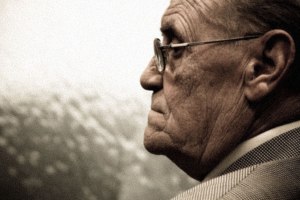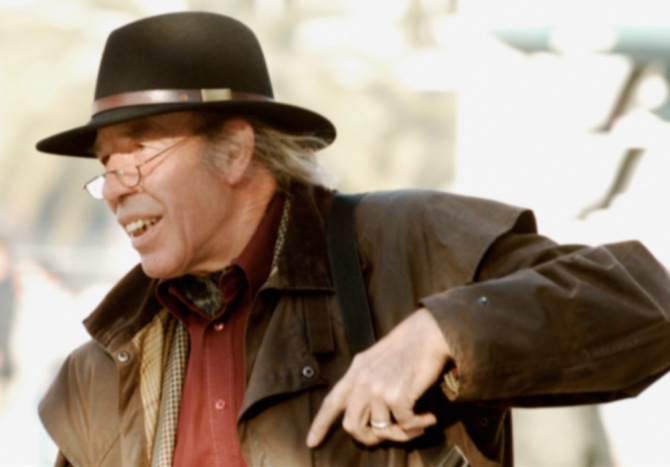THE MYTH
WHO WERE TOTEN HERZEN?
Rob Wallet's initial article on the 1977 Toten Herzen controversy
I was twelve years old when the news broke about the murders of Toten Herzen. Rock stars had a habit of dying individually: Hendrix, Morrison, Joplin, Bolan to name a few, but to lose an entire band in one go was, like the band themselves, a bit clumsy. The mad rumours and urban myths that appeared were thrilling, hilarious and now and again a little disturbing, but in general they fell into three categories:
i – the deaths were a publicity stunt that didn’t go to plan
ii – the band’s subsequent disappearance was a break up due to musical differences
iii – they really were vampires!
With the resurgence of vampire themes in film and television I was prompted, in part by nostalgia and part morbid curiosity, to look again at the Toten Herzen murders in order to clarify in my own mind what may have really happened on that dark and stormy night in March 1977. (Actually it was an unseasonably warm evening, but that doesn’t seem right for a vampire story!)
i – the publicity stunt
There’s no one on record involved in the planning of it. The record company Crass has long gone. A photographer, Lance Beauly, who knew the band’s management, doesn’t recall any plans to do this. Speaking to me in August this year, Beauly, who followed the band on some of the dates on the UK and European tours in 1975 and 1976, told me that outside the circle only Izzy Starling spoke exclusively for them, but within the circle they couldn’t keep their mouths shut about anything.

Regular band photographer in the 70s Lance Beauly. (photo Marc Milligan)
“Dee Vincent would come out with increasingly deranged ideas about kidnapping other singers and at one point suggested putting TNT in Harold Wilson’s pipe. If TH had a mad idea you can bet they’d be talking about it. But being staked in coffins in Highgate Cemetery was never discussed when I was around.”
Who would have come up with an idea like that? Redwall?
“Susan Bekker was the main vamp. She was the one who started the whole vampire image thing, so she would have suggested something like that. Micky was more interested in getting the most money out of an idea, but apart from the name he never really came up with publicity ideas. That was usually the band and he was very adept at maximising those ideas either in terms of money or column inches.”
Did any stunts ever go wrong?
“I remember Rene had some teeth made for a photo shoot, but they were too sharp and he sliced his gum open. He needed a couple of stitches for that one. Seems a bit ironic now the thought of a vampire biting himself and bleeding to death, but that’s how things were in the inner circle. From the outside they were this seriously nasty band, but inside they could be a bit shambolic.”
Dee Vincent’s use of the word liberating brought her to the attention of proto-feminist publication Wishlist. Their 1975 interview attracted the magazine’s largest haul of complaints after Vincent described feminists as middle class crackpots.
So, lets assume for a moment then that the whole thing wasn’t a set up by the band and the management. The first copper on the scene, PC Barry Bush who was twenty at the time, didn’t think it was real. I managed to interview him at his home in London this summer and prize him away from his television and the Olympics just long enough to recall the events as he experienced them.
“We got the call about nine, half nine, that some silly buggers were messing about at Highgate. Again. We thought we were going to get sent down to the Fiddler where a major rumpus had kicked off and most of us were on stand-by in case that spread, but we were told to go down to the cemetery instead and see what was happening.”
How was the ‘messing about’ described to you?
“Some damage had been done to one of the mausoleums. Kids were always trying to get into them, they didn’t know they were death traps. You know, build up of gases and things like that. So, when we arrived the entrance gates were closed so we climbed over the fence and had a look around. It was probably ten minutes before we found the mausoleum that had been broken into. The door was ajar and you could see in the torchlight it had only recently been done over.”
When you say we, who was with you?
“A colleague of mine that night was Stan Bowles. Not the Stan Bowles who played for QPR, he was always getting mixed up with him. He passed away a few years ago. But he was checking out other mausoleums, so I was the first one inside. In the torchlight I saw the first coffin which looked a bit out of place. The inside was an empty mausoleum save for this big tomb in the middle. It was a family tomb so it was big enough to put coffins on top of it. I think there were three on top and another nearby on the floor. No lids on any of them. When I shone the torch on the first one I did get a bit of a shock when there was someone inside it! I thought it was someone messing about and to be fair it would have been a pretty good set up if it hadn’t been real.”
Can you remember who was in it, the first coffin?
“All I can remember now is it was a woman. Big stake of wood in her. And blood? God, you never saw so much in all your life. I didn’t think the human body had so much blood in it. After I checked all four of these coffins I remember thinking whoever did this either doesn’t know much about vampires or human anatomy because they’ve put the stakes through the wrong side of the chest. They weren’t staked through the heart.”
Our interview was interrupted by the cycling, but after another Olympic gold for Britain, Barry told me what happened next, which wasn’t much from his point of view.

Ex-copper PC Barry Bush, retired and living at home in rainy London. Bush was the first on the scene in 1977 and probably the last person alive who was there on the night. (photo Eduardo Arcos)
“Well I radioed back to the station, had to step outside to do that, and Stan reappeared looking a bit pale himself it has to be said. I don’t know what he’d seen, but it couldn’t have been anything like what I’d seen. And the next thing the place is swarming with CID and forensics. We were told to go and stand at the entrance to make sure no one got in. I joked with Stan that we’ll be stopping any nutters getting out as well. Back in them days Highgate attracted that sort of person and at that time of night anyone coming out you wouldn’t be able to tell if they were alive or dead.”
And you never heard anything after that?
“No, strange really because you tend to hear talk about this case and that case coming up and you listen out for things like that, anything you’d been part of. All I know is that the lad who confessed, I think he got done with wasting police time. Doesn’t seem much for murdering four people.”
According to anecdotal evidence Lenny Harper died in 2004 of liver failure and he never spoke to anyone about the incident. No one I’ve spoken to remembers anything about him after 1977, which is bizarre if this was a stunt that went horribly wrong. Someone should have been charged and prosecuted. Lenny may have been one of many confessing to the killings: mad fan, Peter Miles, editors of various tabloid newspapers, possibly Harold Wilson upset at having his pipe threatened with dynamite.
The Metropolitan Police were quite mean with the information they had and after an initial burst of details, they went quiet. Embarrassed at being taken in by the stunt? They couldn’t charge Lenny if the victims weren’t dead, but they could charge him with wasting their time because officers were up there dealing with his expedition instead of being kicked up and down the street in the riot outside the Fiddler pub. There was no autopsy report, no police investigation and Lenny Harper vanished without prosecution or sectioning under the mental health act.
And besides, how could one man kill four people single handed without any signs of a struggle?
Nobody was killed, no one held to account, the band were obviously not going to come forward and confess, so putting it all together you have only one conclusion…
ii – a disappearance due to unpublicised difficulties
If the band had come to the end of its natural life what might have prompted the four of them to split? ‘Musical differences’ is the usual culprit. If the five albums are examined they were becoming more complex and the shifting time signatures was a prelude of what would become an important ingredient of thrash metal in years to come.
Bogdan Misic of the NME described the band as being musically ahead of their time. “The only ones doing that kind of complexity were the prog rockers such as Yes and ELP and, god forbid, Toten Herzen never wanted to be taken seriously musically.” They were a contradiction; hell bent on shocking people with their monstrous looks and bad behaviour, but at the same time very accomplished musicians with Dee Vincent’s hypnotic vocals out on top of it all.
I asked Lance Beauly if they ever talked about the music writing. “Bekker was serious about the music. Of the two bands that Toten Herzen came out of, After Sunset were the better band musically. Bekker and van Voors actually practised. I think they enjoyed the music. Vincent and Daley were more prototype punks.
Elaine Daley looking worse for wear in 1975. Daley was considered the most private (or reclusive) member of the band and never conducted interviews. As a result, very little is known about Daley’s life prior to Cat’s Cradle. (photo Adam Crijzek)
Vincent was quite wild at times which exasperated Bekker. I saw them arguing a few times, but it never looked like anything that would split the band. It wasn’t like Blackmore and Gillan or Don Dokken and George Lynch who could barely sit in the same room together.”
So as the music became more accomplished it would have been increasingly at odds with their ridiculous image. The logical conclusion would have seen Toten Herzen morphing into a heavy prog rock band. Sort of Genesis meets Metallica!
Dee Vincent and Elaine Daley, the prototype punks, as Beauly describes them, would have suited the punk explosion that was just around the corner, whilst Bekker and van Voors would have been two Dutch musicians equally at home with the New Wave of British Heavy Metal that was on the way. The band had options. Without the make up they could have continued knowing that there was a place for whatever musical style they wanted to play.
But life without the make up? “It was fucking convincing make up,” says Lemmy from Motorhead, on a crackly phone line from Bucharest. “I met them at Hammersmith and they looked like they needed a good meal inside them. I used to think if they drank as much blood as they claimed they’d be a bit more rosy cheeked than they were.”
They never drank from his jugular, he confirms. Did Izzy Starling think they could continue without the make up, a la Kiss? “I think it was part of them personally, not a musical act. When Micky exploited the image of the band it was more to do with their actions rather than the looks. They just thought they looked natural. It wasn’t an act.”
Starting in 1973 would have seen them pitched into the middle of the glam rock scene. If you looked normal you were a rock band, if you looked abnormal you were glam, and in the glam spectrum there was Abba at one end and Sweet at the other. Toten Herzen were never comfortable in the make up contests, going out of their way to be anything but glam. That’s why in 1974 they careered recklessly off the spectrum to make sure their name was never uttered in the same breath as Roxy Music or David Bowie.
The warning signs were there; as the decade wore on Sweet shed the eyeliner and watched their record sales nose dive. If only Bekker had owned a crystal ball she would have seen punk come and go, followed by goth and the new romantics; a myriad of looks that could have been adapted if they wanted to remain behind their masks.
And they probably had the money to hang on. According to John Whiggs at Backman Rogers Financial Consultants, totting up record sales and other 360 degree deals (although not a term that was in use at the time) the band probably had enough money to last ten years and that’s not counting money from any material reissued in that time.
Susan Bekker in a publicity shot from early 1977 just weeks before the assault by Lenny Harper. Bekker’s ambition to make Toten Herzen more than a freak show would strain her relationship with manager Micky Redwall.
The question wouldn’t have been ‘how’ but ‘where?’ Publicist Izzy Starling recalls the band moving all over the place. She now lives in a cul de sac in Great Yarmouth, but remembers the band living in hotels, other people’s flats and occasionally houses in Holland where Bekker and van Voors originally came from. “They always travelled at night so the press didn’t follow them.”
Was it true that they once kept awake an entire floor of guests at a hotel in Brussels?
“Yes. There was howling and screams all night, but when hotel staff checked the rooms everyone was asleep with the lights off. Then the noises would start again. I didn’t sleep all night, and the next morning the band didn’t remember anything. They obviously had a big laugh at everyone’s expense. I don’t believe they were charged. The hotel was glad to see the back of them.”
When was that?
“Late 76. Towards the end.”
Without anything directly from the band it’s hard to truly figure out what they were thinking. Anecdotal evidence isn’t given much weight in a court of law for obvious reasons and the best you can do is put the pieces together and hope a picture is formed. My theory is this: some or all of the members of the band were ill and faced with shifting styles in music that had no place for monster rockers, decided to take a break. Being the nutters that they were a quiet exit was never on the cards so they faked a murder and cleared off leaving Lenny Harper to face the wrath of the authorities and a charge of wasting police time. Now, they have been overtaken by changing times and musical tastes and decided they’re better off where they are. Wherever they are!
The only thing we can be sure about… they were not murdered by Lenny Harper in a tragic publicity stunt. Far from it. It all seems to have been rather effective!
And let’s not forget, there was the third rumour…
iii – they really were vampires!
It’s hard to pin down exactly when this rumour started, but it may have been a novel by London based occult writer Jonathan Knight. He was an author of several gothic horror books and in 1977, seven months after the band’s grisly demise, published ‘The Dead Heart Weeps’ in which a fictitious vampire rock band are hunted down and killed by a descendant of Van Helsing.
‘The din of the storm outside failed to raise the sleeping ghouls. Their faces red and healthy with the evening’s feast, their bodies bloated. Each gazed into infinity with all the calm and peace of satisfied devils. I feared they would catch my eye and reach for the stake, but they remained motionless and oblivious to my intentions. I looked upon the pretty face of evil one last time. The singer, for she would be the first to perish, would utter no more melodies. She had beguiled and enchanted her final audience. I placed the stake on her breast, gathered myself for the ear shattering scream and with a terrible blow of the hammer drove the stake deep into the wretched monster’s dead heart…’
The Dead Heart Weeps, Jonathan Knight (Stone Lion Books 1977)
Knight insists the band in the novel was based on Toten Herzen and that he wrote the book to alert people to the truth. He claims the band regularly visited the gothic scene in London and always claimed to be vampires. He could identify witnesses, people sworn to secrecy and members of the band’s ‘inner circle.’ He says this was a euphemism for other vampires.

Rob Wallet often suspected Jonathan Knight knew more than he let on. He would later play a key role in identifying the band’s ‘hiding place’. (photo Pedro Ribeiro Simoes)
In an interview in Fortean Times in 1983 he revealed that Lenny Harper was not a crazed fan, but the son of a Presbyterian minister called Arthur Harper. Lenny found out where the band stayed during the day and killed them by staking them while they slept.
I exchanged emails with Knight in November and he claimed to have some information, not known to him in 1983. Lenny didn’t act alone. He was helped by a friend called Eric Mortimer who is still alive and works as a librarian in Norwich.
Knight is absolutely convinced the band were real vampires, but the problem with his story is that he’s obviously never spoken to PC Barry Bush, the first officer to arrive at the crime scene. Knight would have been aware of Lenny’s vampire-hunting incompetence and the fact that the band were staked through the lungs. The worst thing Lenny could have inflicted on them was a seriously bad cough.
I think it’s time to find out once and for all where they really are.




